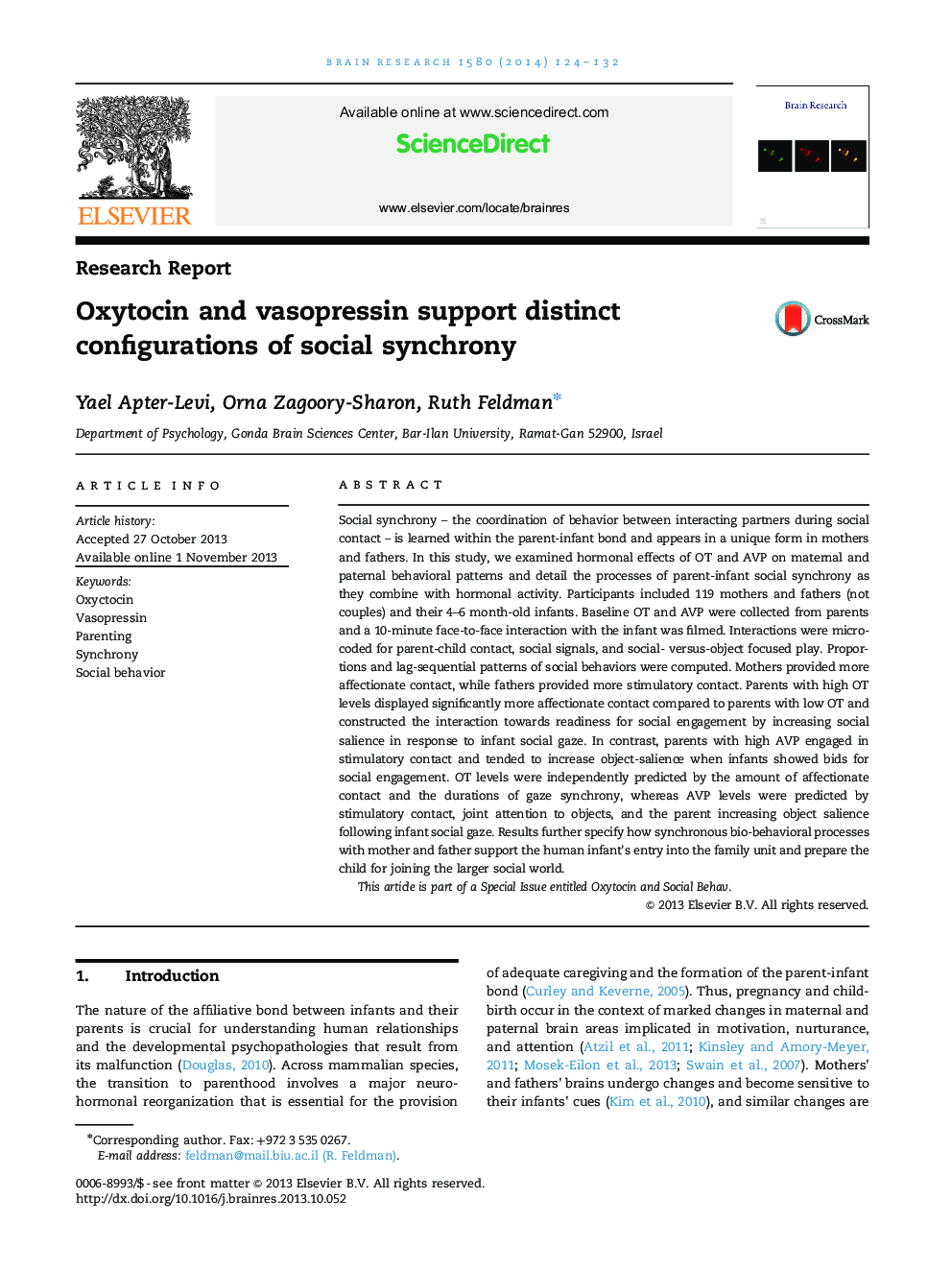| کد مقاله | کد نشریه | سال انتشار | مقاله انگلیسی | نسخه تمام متن |
|---|---|---|---|---|
| 4324125 | 1613859 | 2014 | 9 صفحه PDF | دانلود رایگان |
• We examine hormonal correlates of parental-infant synchrony.
• Oxytocin and vasopressin support different parental behaviors prompting social readiness.
• Oxytocin levels correlates with parental affectionate contact.
• Vasopressin levels correlates with parental stimulatory contact.
• Synchronous bio-behavioral mechanisms support the infant's entry into the social world.
Social synchrony – the coordination of behavior between interacting partners during social contact – is learned within the parent-infant bond and appears in a unique form in mothers and fathers. In this study, we examined hormonal effects of OT and AVP on maternal and paternal behavioral patterns and detail the processes of parent-infant social synchrony as they combine with hormonal activity. Participants included 119 mothers and fathers (not couples) and their 4–6 month-old infants. Baseline OT and AVP were collected from parents and a 10-minute face-to-face interaction with the infant was filmed. Interactions were micro-coded for parent-child contact, social signals, and social- versus-object focused play. Proportions and lag-sequential patterns of social behaviors were computed. Mothers provided more affectionate contact, while fathers provided more stimulatory contact. Parents with high OT levels displayed significantly more affectionate contact compared to parents with low OT and constructed the interaction towards readiness for social engagement by increasing social salience in response to infant social gaze. In contrast, parents with high AVP engaged in stimulatory contact and tended to increase object-salience when infants showed bids for social engagement. OT levels were independently predicted by the amount of affectionate contact and the durations of gaze synchrony, whereas AVP levels were predicted by stimulatory contact, joint attention to objects, and the parent increasing object salience following infant social gaze. Results further specify how synchronous bio-behavioral processes with mother and father support the human infant's entry into the family unit and prepare the child for joining the larger social world.This article is part of a Special Issue entitled Oxytocin and Social Behav.
Journal: Brain Research - Volume 1580, 11 September 2014, Pages 124–132
